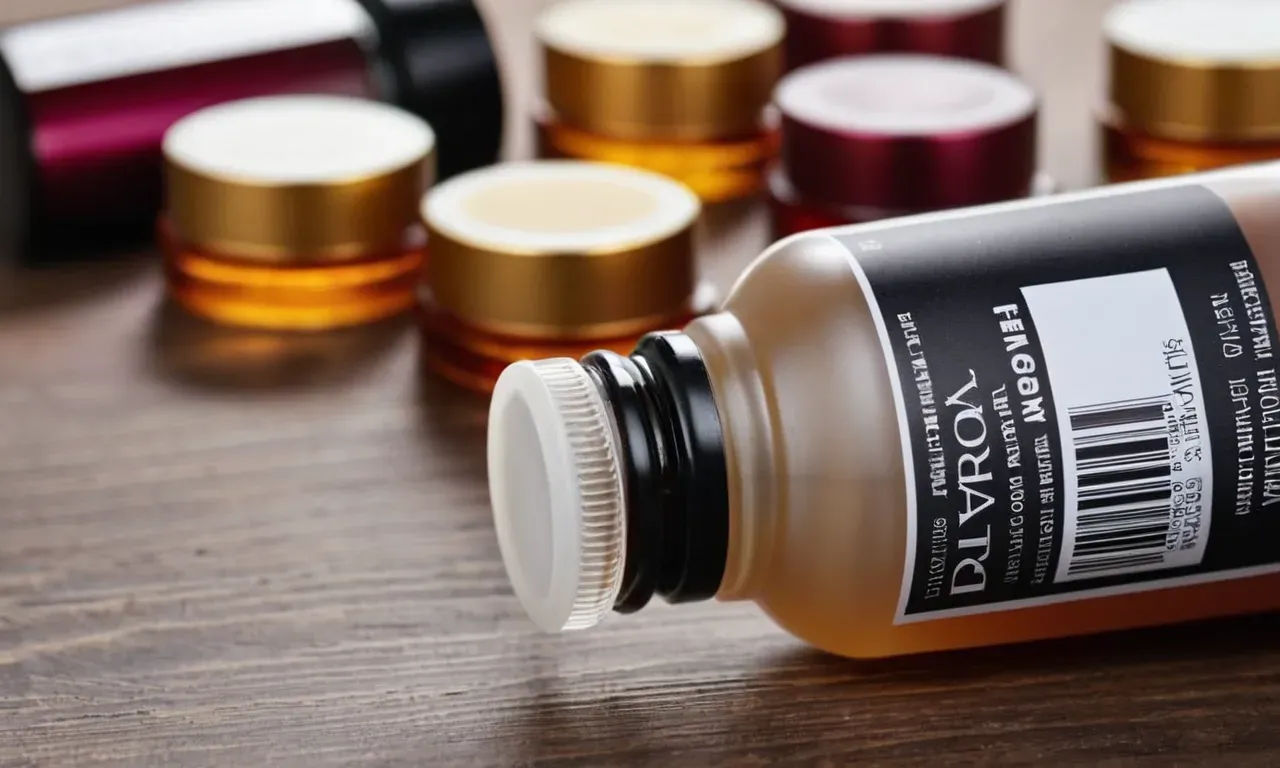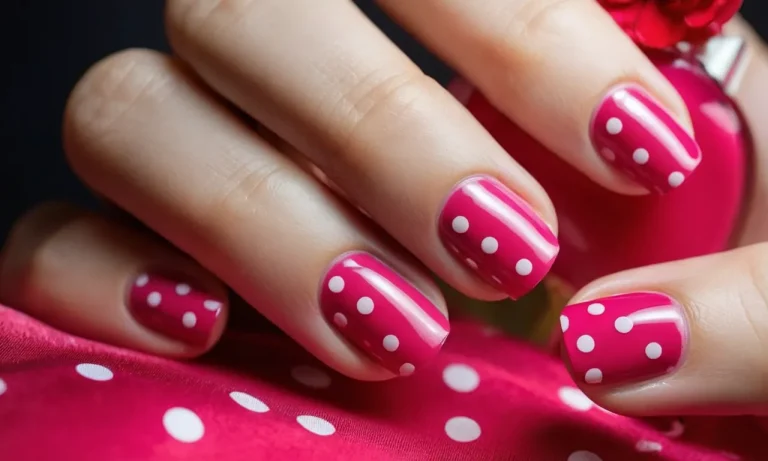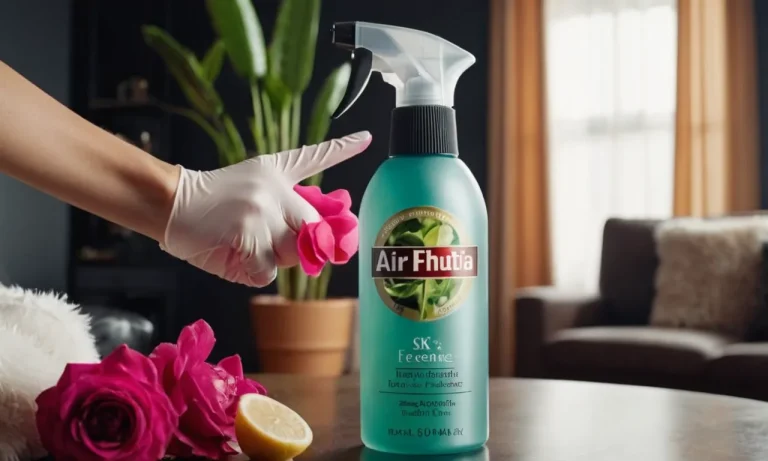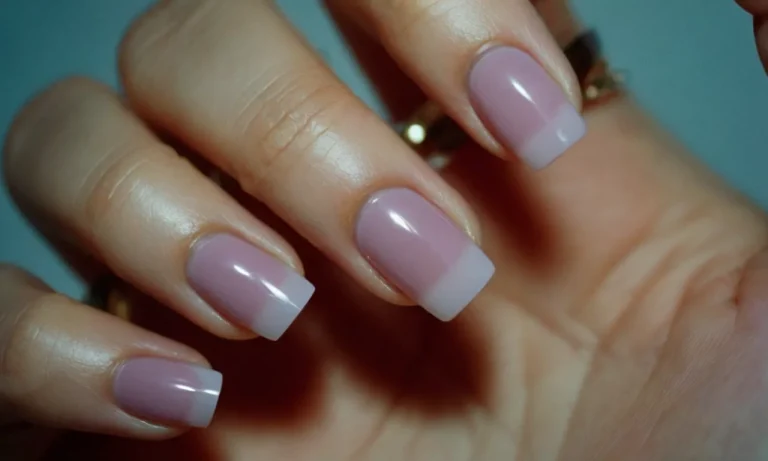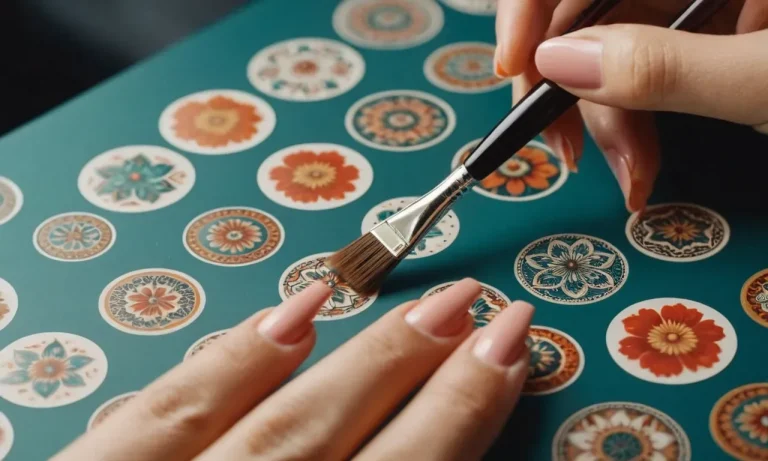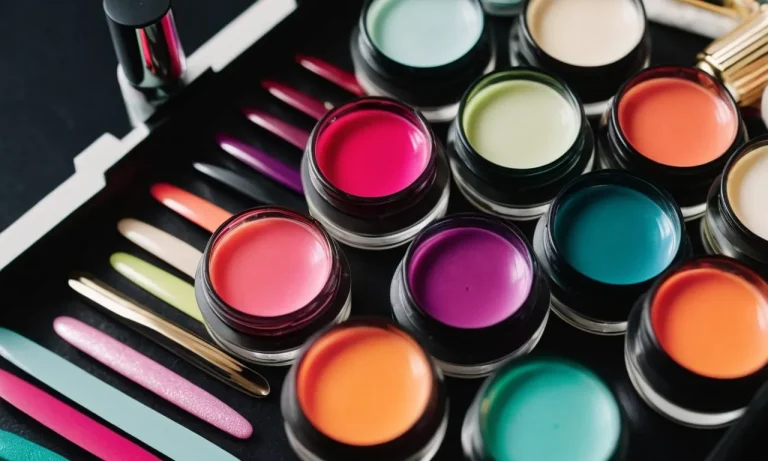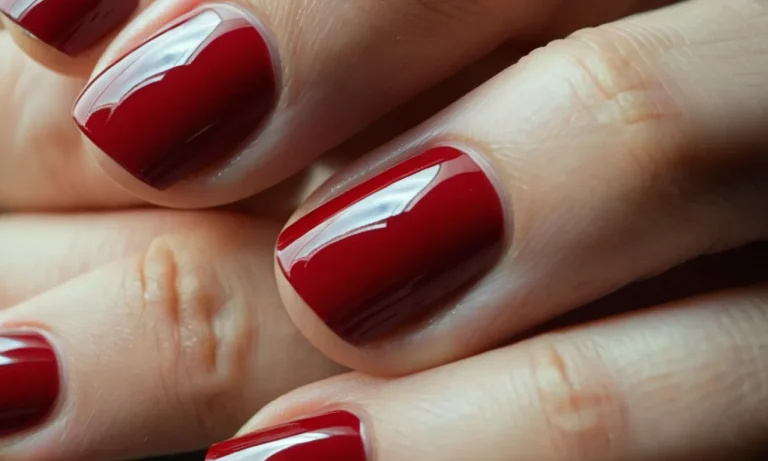What Is Nail Primer? A Detailed Guide
If you’ve ever gotten a manicure or done your own nails at home, you may have seen nail technicians use a product called nail primer. But what exactly is nail primer and why is it an important step when doing your nails?
In this comprehensive guide, we’ll answer common questions about nail primer including what it’s made of, what it does, how to use it properly, and whether it’s really necessary when painting your nails.
If you’re short on time, here’s a quick answer to your question: Nail primer is a product applied before nail polish that helps the polish adhere to the nail plate for a longer-lasting manicure.
What is Nail Primer Made Of?
Nail primers are made with a few key ingredients that help prep nails for polish application:
Nail dehydrator/cleanser
Most nail primers contain alcohol, which acts as a dehydrator and cleanser. The alcohol removes oils from the nail plate, ensuring a clean surface for polish adhesion. Common alcohols used include ethyl alcohol, isopropyl alcohol, and butyl alcohol.
Adhesive ingredients like methacrylate polymers
Primers also contain methacrylate polymers such as polymethyl methacrylate (PMMA) or ethyl methacrylate (EMA). These polymers act like glue, bonding to the nail plate to create a tacky surface that grips polish.
Acid mantle replenishers
Some primers feature ingredients like glycerin, dimethicone, or hydrolyzed wheat protein to replenish moisture and recreate the nail’s natural acid mantle. This helps restore healthy nails and prevents excessive dryness from the alcohol cleansers.
In addition to the core ingredients above, some nail primers may also contain:
- Vitamins and minerals for added nail nourishment
- UV filters to help prevent discoloration
- Ridge filling agents to create a smooth canvas for polish
- Antioxidants to neutralize free radicals and support nail health
High-quality nail primers leverage the right blend of cleaning agents, adhesives, and conditioners to prep nails for a flawless, long-lasting manicure. Look for trusted brands that use salon-quality ingredients designed specifically for nail care and polish application success.
What Does Nail Primer Do?
Nail primer is an important prep step that helps your manicure last longer and look better. Here are 5 key benefits of using nail primer:
Removes oils and debris
Nail primer contains solvents that help remove oils, moisture, and residue from the nail plate. This helps polish adhere better. The scrubbing motion of applying primer also lifts dirt, dust and skin cells from the nail surface.
Roughs up the nail surface
Primers lightly etch the nail plate, creating microscopic scratches and grooves. This gives polish something to grip onto, preventing peeling and lifting.
Helps polish adhere
The slight etching action of primers promotes better adhesion of lacquer. Primers also typically contain ingredients that facilitate bonding between polish and the nail plate.
Prevents chipping and peeling
By improving adhesion and locking color onto the nail, primer helps prevent early chipping, cracking and peeling. This extends the life of your manicure significantly.
Protects nails
Some nail primers contain nourishing ingredients like vitamins, proteins and calcium that condition nails. This helps strengthen nails and prevent damage from frequent polish application and removal.
How to Apply Nail Primer
Applying nail primer correctly is crucial for achieving a long-lasting, chip-free manicure. Here are the key steps for using nail primer effectively:
Clean nails first
Start with clean, dry nails. Remove any old nail polish with a non-acetone nail polish remover, then wash hands with soap and water. Use a nail brush to gently scrub under and around nails to remove dirt, oil, and debris. Thoroughly dry nails with a towel.
Apply a thin layer to each nail
After nails are squeaky clean, apply a thin, even layer of nail primer to each nail using the brush built into the primer bottle. Don’t glob it on – a sheer layer is all you need for the polish to adhere properly. Apply primer to the tops of nails as well as just over the tips and sides.
Allow the primer to dry for 60 seconds before moving onto the next step.
Let dry completely before polishing
It’s crucial to let the primer dry completely before painting on nail polish. Most primers take about 60 seconds to dry. Wave hands gently to speed up drying time. If you apply polish too soon, it won’t bond correctly with the primer. Have patience and let the primer dry thoroughly.
Use it before every manicure
Using nail primer is not a one-time thing – it’s essential to apply it before each and every manicure. Over time, nails become exposed to oil, soap, water, and other elements that can break down the adherence of polish.
Applying fresh primer before each manicure preps the nails for maximum polish bonding and wear time. Primer is the secret to avoiding chips and smudges!
Nail primer acts as the glue between your natural nail and painted polish. Just a few simple steps creates the smooth, sturdy foundation for your polish. So don’t skip this important nail care product – primer is the key to salon-perfect nails at home!
Types of Nail Primers
Bonding base coat
A bonding base coat is a must-have primer that helps nail polish adhere to the nail plate and last longer without chipping or peeling. This type of primer contains ingredients like acrylic polymers that bond to the nail plate and allow the lacquer to “grab on.”
Using a bonding base coat helps prevent staining of the nails from dark polishes. It also protects the nails from damage when removing polish. Applying 1-2 thin coats of bonding base results in a smooth, even surface for lacquer application.
Popular base coat primers include OPI Natural Nail Base Coat and Essie First Base.
Ridge-filling primer
Ridge-filling primers are ideal for people with pronounced nail ridges or grooves. These primers contain ingredients that fill in uneven textures, creating a smooth surface for even polish application. They help prevent polish from pooling in ridges, which can lead to chipping.
Some common active ingredients in ridge-filling primers include silk proteins, vitamin E, and hydroxyapatite. Using a ridge-filling base coat helps extend the wear of nail polish. Two top-rated options are ORLY Ridgefiller Bonder and NailTek Foundation II Ridge Filler Base Coat.
Dehydrator
A dehydrator or cleanser primer removes oils and residue from the nail plate before applying acrylic or gel polish services in salons. These primers use ingredients like acetone to thoroughly dry and sanitize the nails. Removing any moisture helps acrylics and gels properly bond to the nail.
Salon workers often use a dehydrator primer before every new nail service to prep nails. Popular options include Young Nails Protein Bond and CND Super Shine Drying Drops.
Acid-free primer
Acid-free primers help prep and balance the pH of nails before polish application. They do not contain acidic ingredients that could weaken nails over time. These neutral pH polishes also help activate any pH-sensitive base coats. Using an acid-free primer may support nail health.
Two widely available acid-free options are Essie Here to Stay and OPI Natural Nail Protector. Always check the primer’s description to confirm if it is acidic or acid-free.
Do You Really Need Nail Primer?
Nail primer is often touted as an essential step in achieving a long-lasting, chip-free manicure. But is it really necessary? Here’s a look at the pros and cons of using nail primer.
Makes Manicures Last Longer
One of the main benefits of nail primer is that it helps the polish adhere better to your nails. Primers create a tacky surface that polish can grab onto. This leads to a stronger bond between your nails and the polish, preventing chips and increasing wear time.
Most primers claim to make your manicure last up to 7-10 days without chips or peeling.
Prevents Bubbles and Chips in Polish
If you find your nail polish gets bubbles or chips within a day or two, a primer can help. The smoother surface it creates prevents air bubbles from forming when the polish is applied. It also seals the nail and makes it less porous, protecting against moisture and oils that lead to chips and peeling.
May Not Be Necessary with Gel Manicures
Since gel manicures already bond strongly to the nails, primer may not make much of a difference. Gel polish is cured under UV or LED light, creating a hard, long-lasting finish. Using a primer first won’t significantly improve its wear time or durability.
However, if you have particularly oily nail beds, a primer may still help the gel adhere better.
Important for Problem Nails
Nail primer is especially useful if you have very oily nails, weak peeling nails, or ridges in your nails. It fills in imperfections to create a smooth canvas for polish. If your nails are stained yellow, many primers also contain whitening ingredients like hydrogen peroxide to create a neutral base color.
Conclusion
Nail primer is an important prep step when doing a manicure at home or in the salon. By cleaning and slightly roughing up the nails, nail primer allows polish to adhere better and remain chip-free for many more days.
While not every manicure may require a primer, it’s a good idea to use one regularly for longer-lasting nails, especially if you have oily nail beds or weak peeling nails. Next time you paint your nails, reach for the primer first and see the difference it makes in how long your manicure lasts beautifully.

